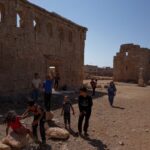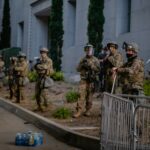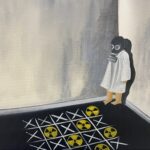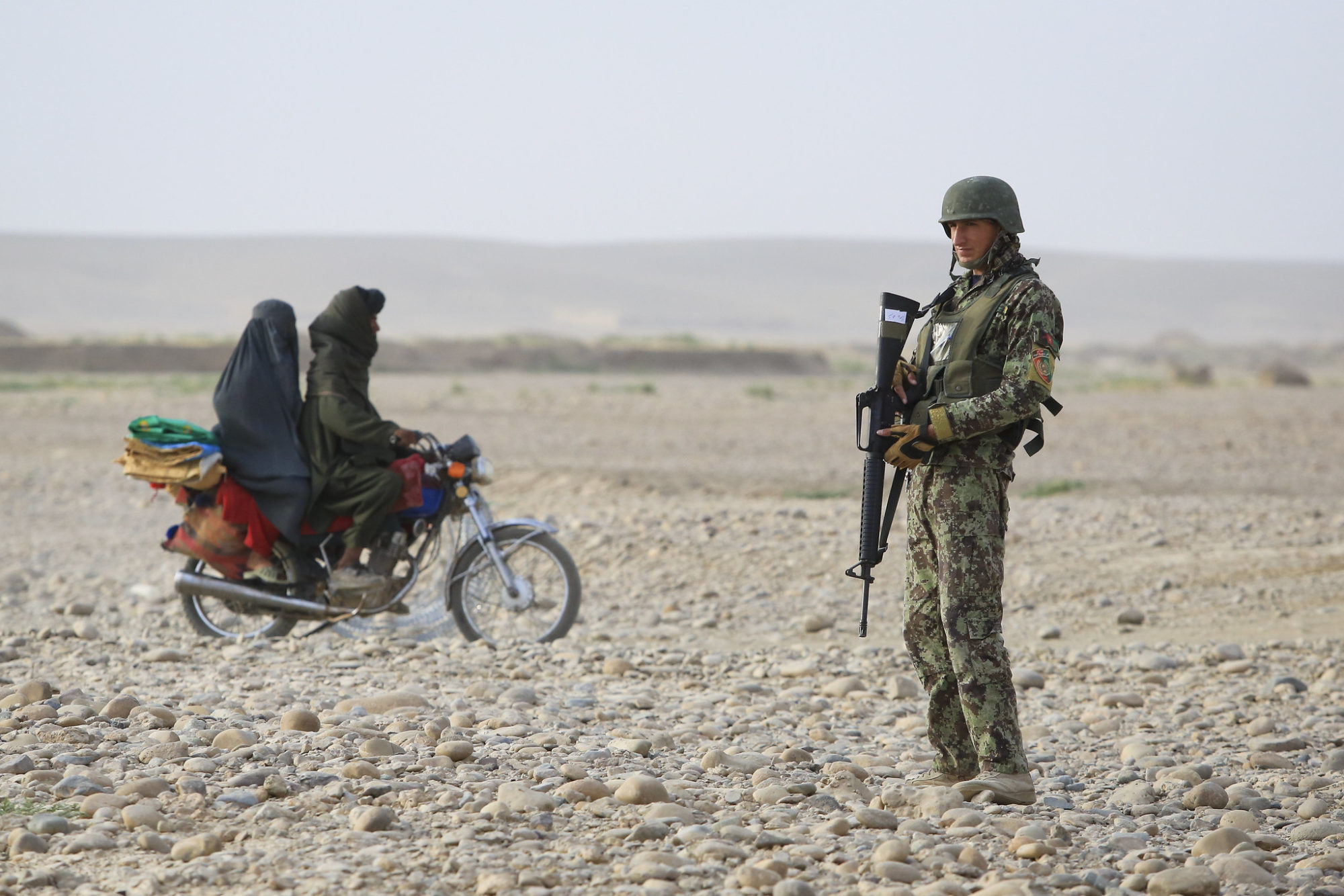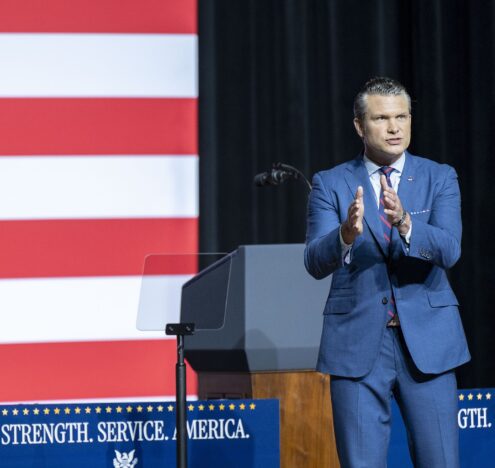US military checkpoints in Iraq and other places where US troops are present are considered normal and necessary components of security. When attacked, the vulnerability of the checkpoints and the dangers to the soldiers operating them are discussed in the media and beyond. Missing from these conversations are the everyday dangers for civilians when they approach a checkpoint. An average of one Iraqi civilian a day was killed or injured at a military checkpoint between 2006 and 2007. Shedding light on this largely unnoticed but deadly context, Thomas Gregory examines how the idea of “hostile intent” has been used to justify the need to use lethal force against civilians in his article, “Dangerous Feelings: Checkpoints and the Perception of Hostile Intent.”
The prescribed conduct for dealing with “hostile intent” is written into the Standing Rules of Engagement (SROE) defined by the US Department of Defense. These rules allow soldiers to use deadly force against anyone posing an imminent threat and characterize this force as legitimate self-defense. These deliberately broad and elastic standards were set “to cope with the uncertainty and unpredictability of the situation at checkpoints.” Going beyond ambiguous rules and how they are followed, the author’s main argument is that affective judgments — inner dispositions or feelings— and racial assumptions are complementary to conscious rule-based decisions made by troops on the use of lethal force at checkpoints.
The study was conducted by examining an archive of 154 declassified incident reports, which the American Civil Liberties Union (ACLU) received via the Freedom of Information Act (FOIA). The reports and the soldier testimonies included in them revealed that even mundane acts such as driving too fast near a coalition checkpoint, swaying into the wrong lane, avoiding eye contact, walking erratically, and becoming agitated when stopped by soldiers could lead to civilians being killed. Yet in more than three-quarters of the reported incidents, investigators concluded that the soldiers had acted in accordance with the SROE on hostile intent and the right to self-defense. Consequently, most of the incidents were considered tragic mistakes or accidents and lumped with other forms of collateral damage.
The author argues that affective judgments are not spontaneous but rather are based on a set of gendered and racialized assumptions “that mark certain bodies [in particular, Middle Eastern men] as dangerous before they even arrive on the scene.”
The author argues that affective judgments are not spontaneous but rather are based on a set of gendered and racialized assumptions “that mark certain bodies [in particular, Middle Eastern men] as dangerous before they even arrive on the scene.” In the fast-paced context of checkpoint encounters, a calm assessment for rational, rule-based decision-making rarely takes place. Previous encounters and general assumptions — for example, stereotypes — about the local population approaching the checkpoint play into how soldiers respond to different situations. “Bad feelings” then can lead to deadly encounters. Visual cues (running away; looking nervous; reaching into a pocket) can be interpreted by soldiers as a threat. The analysis revealed that “being a ‘military-age male’ was sufficient to generate a considerable amount of unease or anxiety among troops at coalition check-points.” One cautious explanation lies in the comparison to police killings of African Americans in the US, where “subtle visual cues” are enough to identify potential threats. In the study, military-age males were more likely perceived as a threat when there had been previous attacks at a checkpoint. Regardless of their behavior, military-age males were already viewed with suspicion, making it more likely that any of their actions would be presumed to be hostile.
In sum, the author broadens debates about checkpoint killings and hostile intent. The analysis of testimonies in the reports showed that soldiers talked about bad feelings, gut instincts, or a tense atmosphere, even when only asked to present the facts of checkpoint killings. This shows that soldiers’ feelings and intuitions mattered just as much as SROE. Checkpoint killings need to be understood in a context where affect, racial assumptions, and conscious decision-making all combine to inform choices made by soldiers. The analysis of the incident reports indicated that experiences from the past and unquestioned (racial) prejudices informed those reactions. Consequently, deadly checkpoint encounters cannot be reduced by tightening the rules of engagement but instead by addressing soldiers’ inner dispositions and presumptions and how they came into existence.
INFORMING PRACTICE
This research carries multiple lessons that go beyond making the Standard Rules of Engagement (SROE) less ambiguous. Certainly, tightened rules of engagement that equally emphasize physical safety for checkpoint soldiers and civilians would likely reduce killings. More broadly, though, a first step is to create awareness about the issue of checkpoint killings on all sides (soldiers and civilians). An awareness campaign, dialog processes, and culturally sensitive de-escalation practices are useful steps to reduce the killings. These do not, however, address how human feelings and presumptions inform life or death decision-making processes. Moreover, they do not address the broader dehumanization integral to warfare.
More fundamentally, there are direct implications here for how soldiers’ presumptions about “dangerous bodies” can be transformed. As the research showed, Middle Eastern military-age males were already viewed with suspicion. By creating encounter programs as part of the awareness campaign, personal prejudices and enemy images can be challenged. While long-held, deep assumptions about “the other” will not be immediately changed, intergroup contact theory suggests that interpersonal contact (in this case, between coalition soldiers and military-age Iraqi males) can reduce prejudices between groups. It should be noted, however, that the conditions under which this would take place in Iraq — or other countries that the US has militarily occupied — are less than ideal. The power imbalance between the occupying force and the occupied should lead us to consider the broader discussion of warfare.
In war, the dehumanization of “the other” is commonly used to justify violence and killings. The enemy is evil, one’s own side is good. Those who are innocent are often swept up in sanitized language such as “escalation of force” (shooting at civilians) or “collateral damage” (killing civilians). This language disguises the killing and suffering of human beings. This language is used to maintain overarching myths about the inevitability, necessity, and beneficial effects of wars.
It would be too easy to blame US soldiers for their actions at checkpoints. They are placed in a situation where their mere human-ness of having a “bad feeling” about a situation or person determines the life or death of other humans. That is not acceptable. In addition to more operational fixes addressed above, the entire context needs to be transformed. The “inhuman” that is maintained in warfare, and the language around it, needs to be humanized.
An aspirational goal, provided it has multi-stakeholder and local support, can be the introduction of unarmed civilian peacekeepers (e.g., Nonviolent Peaceforce) with the goal of eliminating dangerous military checkpoints and ending occupations. Unarmed civilian peacekeepers, if invited and accepted by the local communities, can take over security operations such as searching vehicles for explosives, while at the same time actively engaging with local communities in dialog processes, reconciliation efforts, and the restoration of the social fabric. The former would fall more into traditional peacekeeping operations (prevention of violence), while the latter already introduces important peacebuilding components (prevention of violence and promotion of lasting and sustainable peace). Unarmed civilian peacekeepers are not part of the war machinery. They are typically not targets for attacks by violent groups. If they are successful and have buy-in from the communities they are engaged in, nonviolent peacekeepers can create a context where military occupation can no longer be justified and civilian efforts to build lasting peace are used exclusively.
Published in collaboration with the Peace Science Digest, which summarizes and reflects on current academic research in the field of peace and conflict studies. To subscribe or download the full piece, which includes additional resources, visit their website.



